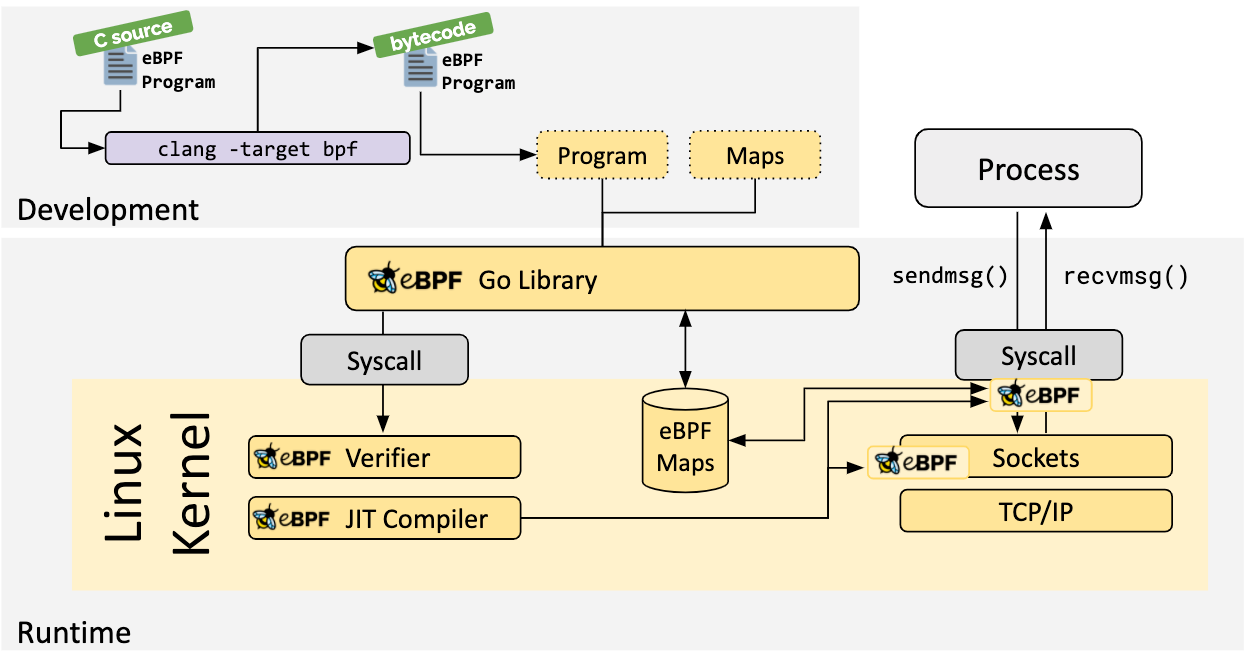Why a DevOps/SRE or Network Engineer should know about eBPF and how it is going to make a revolution?
As a DevOps engineer, SRE, or network engineer, it is important to stay up-to-date on the latest tools and technologies that can help improve the reliability, performance, and security of software systems and networks. One technology that is gaining a lot of attention in the industry is extended Berkeley Packet Filter (eBPF), which has the potential to revolutionize the way that systems are monitored, instrumented, and secured.

So, what is eBPF and how is it going to make a revolution?
At a high level, eBPF is a powerful and flexible kernel-level feature that allows you to attach custom programs (called "eBPF programs") to various points in the kernel's processing path. These eBPF programs can be used to perform a wide range of tasks, such as filtering, modifying, or forwarding packets, or collecting performance and security-related data.
One of the key benefits of eBPF is that it allows you to run these programs in a safe and isolated manner, without the risk of crashing the kernel or affecting system performance. This makes eBPF an attractive option for running custom code in the kernel without the risk of destabilizing the system.
So why is eBPF such a big deal and how is it going to make a revolution?
Here are a few reasons why eBPF is worth paying attention to:
- Performance monitoring and analysis: eBPF can be used to collect a wide range of performance-related data, such as CPU usage, memory usage, and network traffic. This data can be used to troubleshoot performance issues, identify bottlenecks, and optimize system performance.
- Security: eBPF can be used to monitor and filter network traffic in real-time, allowing you to detect and block malicious traffic before it reaches your systems. eBPF can also be used to implement secure networking policies and enforce compliance.
- Integration: eBPF is a powerful and flexible kernel feature that can be integrated with a wide range of tools and systems. For example, you can use eBPF to collect performance data that can be analyzed using tools like Prometheus or Grafana, or you can use eBPF to implement network security policies that can be managed using tools like Kubernetes.
So, how does eBPF works in the backend?

The above diagram shows the high-level architecture of eBPF. As you can see, eBPF consists of several components that work together to enable the execution of eBPF programs.
- eBPF programs: These are the custom programs that are attached to specific "hooks" in the kernel's processing path. These hooks can be used to intercept and process packets, system calls, or other kernel events.
- eBPF virtual machine: When an eBPF program is executed, it is run inside an eBPF virtual machine (eBPF VM). The eBPF VM is responsible for executing the eBPF program in a safe and isolated manner, without the risk of crashing the kernel or affecting system performance.
- eBPF maps: eBPF maps are a key data structure that allows eBPF programs to share data with each other and with the kernel. eBPF maps can be used to store and retrieve data, such as packet counts, performance metrics, or security-related data.
- eBPF verifier: The eBPF verifier is a component that is responsible for ensuring that eBPF programs are well-behaved and do not compromise the stability or security of the system. The verifier checks the eBPF program before it is loaded into the kernel, and ensures that it follows the rules and constraints of the eBPF VM.
- eBPF JIT compiler: The eBPF JIT (Just-In-Time) compiler is a component that is responsible for compiling eBPF programs into native machine code that can be efficiently executed by the processor. This allows eBPF programs to run at near-native speeds, without the overhead of an interpreter.
Conclusion:
Overall, eBPF is a powerful and flexible technology that has the potential to revolutionize the way that systems are monitored, instrumented, and secured. As a DevOps engineer, SRE, or network engineer, it is worth learning about eBPF and exploring how it can be used to improve the reliability, performance, and security of your systems.